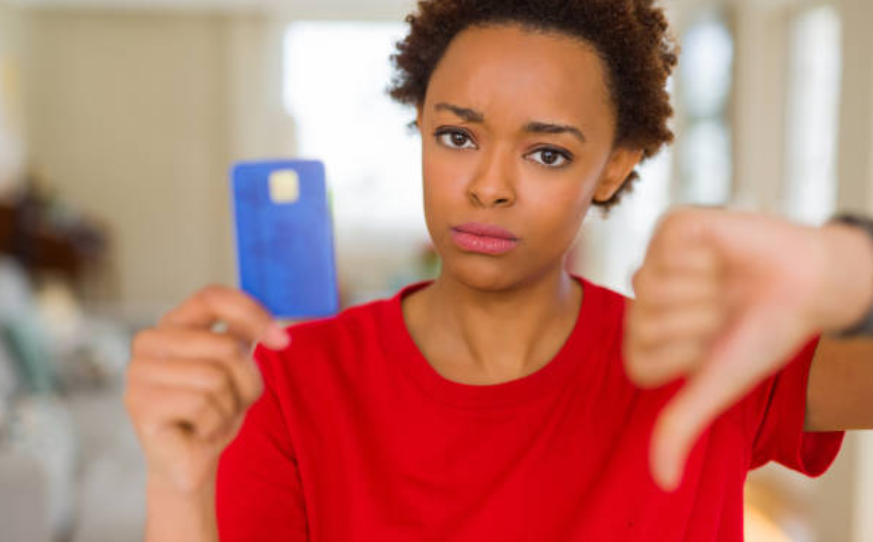Today we share a step-by-step system that will show you how to manage upset customers and handle challenging guests with care.
We’ve all been there. A mistake happens; some confusion about your tour; an unmet expectation. Whatever the cause, you now have angry, frustrated guests on your hands and you need to manage upset customers.
The reaction can be aggressive, with guests yelling and shouting and making demands about what should be done. Or at times much more passive. You’re suddenly getting icy looks, curt responses and overhearing snippets of negative comments. Either way, it’s time to put on a new hat.
How to manage upset customers is a skill that all service professionals must develop.
Some companies will enrol staff in weeks of workshops and spend hundreds of thousands of dollars on guest services training. And when you start to look at some facts and statistics regarding customer service, you start to appreciate the real-world costs that come from poor service.

Most thought leaders and authors on the subject of excellent service, will tell you that your staff need to be reliable, responsive, empathetic, creative problem solvers, reassuring, calm and consistent.
Now I don’t know about you, but for me most of the tour and activity operators with whom I worked provided nowhere near enough training in this area. We may have had an afternoon session or two, but for the most part, my fellow guides and I were meant to just ‘figure it out’
How to manage upset customers is absolutely an art versus a science, and it will take a lot of practice to become proficient. Each human being and every situation are filled with nuance and subtlety, and what works for one guest may not work for another.
All of this being said, all great art employs a wide range of techniques and tools for accomplishing their final product.
In this video I share a customer service tool that I have grown to love. I routinely use it not only while leading tours, but also in my day to day life. It is called the LAUGH method and it is a simple guide for how to manage upset customers.
The L.A.U.G.H. Method has been circulated widely by Dr. Ian Brooks – a leadership consultant from New Zealand – but it’s original source likely goes further back.
It is an acronym comprising of the 5 recommended steps for handling complaints and tough guests.

We’ll look at each letter of this acronym and explore the overarching process to resolve challenging problems on tour. I’ll even share specific language on how you can effectively, ‘Listen, Acknowledge, Understand, Give Solutions and Hit Home’
While the specific incidents and guests will always be different, this step-by-step process will give you the big picture of how to reliably get to a satisfying outcome.
In addition, we’ve create a helpful one-page cheat sheet that summarizes the L.A.U.G.H. method, which you are free to download and share with your colleagues and fellow staff.
Enjoy the video and PDF, but above all, keep in mind that this tool can be a game changer in your ability to manage frustrated customers. It will take lots of practice, patience and a willingness to correct bad habits, but, by sticking to it, hopefully you’ll appreciate the effectiveness of these techniques.
All the very best,
-Kelsey T
Finished Watching?
In the comments below, share what strategies you have for managing upset guests. What steps do you take when faced with an angry or frustrated customer?
Transcript:
Let’s get started. As touring activity operators, we all know that dealing with, and managing, frustrated, upset or even disappointed guests can be one of the hardest parts of our job. So today I’d like to share one of the most practical and down to earth tools that can really help us get through these situations.
It’s called the laugh method, and it’s been around for decades, and the original source is unclear. Now, it may seem a little cheesy, as acronyms can sometimes be, but I just want to reassure you that this is a method that I’ve actually used, over and over, hundreds of times on tour, and it’s one of the first things that I coach to new guides during a training program. So let’s take a look.
The world LAUGH is an acronym, comprising of the five recommended steps when facing touch clients or upset guests. L is for listen, A – acknowledge, U – understand, G – give solutions, and H – hit home; but take note, the order is extremely important here, and it’s actually where many tour leaders mess this up.
Let’s begin with L, listen. You probably know from your own experience that when you’re upset or angry, you have a story to tell. Keep this in mind, as upset customers want to tell their story, and know that they’re being heard. Listening means standing there quietly and letting the other person talk without interruption. Now, a lot of time, our natural response is to jump right in and maybe be defensive if they’re being a bit accusatory, or offer solutions right away, or get to corrections. Avoid this temptation. You can ask questions, of course, to learn more, but not to get defensive or challenge them at this stage. Listening, it sounds simple, but believe me, this step is a lot harder than you might thing.
The second step is A. Acknowledge what has happened. This step is critical and most people skip right over it. We listen, but we don’t take the time to acknowledge what has happened. A guess is complaining because they felt they’ve been wronged in some way, or an expectation hasn’t been met, and they’re looking for acknowledgment that this has happened. They are probably looking for a sincere apology, and also some commitment from you to make things right. So, the solution to any problem, whether major or minor, should begin with acknowledging what has happened, and offering a sincere apology.
We often think that “I’m sorry” implies guilt, or wrongdoing, or I’ve screwed up in some way, but it doesn’t really necessarily imply you’re wrongdoing. Think of the way that we use “I’m sorry” when we hear someone’s grandmother has passed away: “I’m sorry to hear that.” That’s the type of way that we want to use “I’m sorry,” and unless you actually hit that person’s grandmother with a car, when you say “I’m sorry,” guilt is not implied.
In this step, use language like, “I’m so sorry to hear that, that must have been really frustrating,” or “I hear you,” “Okay, I see what you’re saying.” “I’m so sorry to see you upset by this, this was no the plan,” or “Thank you for bringing this to my attention. Let’s see how we can fix this.”
The third step is U. Understand the problem or problems. One of the most powerful ways to calm an irate guess, somebody who is really, really upset, is to show that you truly understand what they’re saying; like, what is making them upset. Think of all the times that you’ve been really upset and when somebody finally seems to have a full grasp of the situation that you’re in, that can be very soothing, and allows us to move on to fixing the problem, right.
Once we’ve listened and acknowledged, we can now ask a few probing questions, to try and find out what the really sort of core issue is, that’s making the person upset. Here are some examples of great probing questions: “When did this issue arise? What exactly was promised to you? Any idea as to why this might have happened, and how can we make this right?”
One of the least effective things that we can do is solve the wrong problem, and this happens quite often. If there’s an easy solution, or we’re quick to jump to something, we may be fixing the wrong thing. So take the time to fully understand why your guest is upset, and as a hint, it may not be the initial thing that they brought up. It might be something that’s underlying that, a sense of being wronged in some way, that something unfair happened, and they feel disrespected, and that might be the core issue that we need to fix.
Step four is G, give solutions. Let’s just first appreciate that actually solving the problem is the fourth step. Fourth! Isn’t that crazy? I mean, our natural inclination is to rush in and fix the problem right away. Make this awkward situation go away as quickly as possible. I know. I’ve been there, but we do not want to do that. We want to resist that urge to jump right in before we’ve listened, acknowledged, and understood what’s going on.
At this stage, it’s also common, when we’re giving solutions, to bring up a lot of excuses, or explanations of why this whole situation has happened, but let me tell you, your guests are not interested in hearing about your company problems, or who is actually to blame. Avoid talking in those terms, and really focus on how we can fix their problem.
Once again, your language is key. Here are some example phrases that work really well: “What can we do to resolve this? We could talk to the office right now, or if it’s okay with you, perhaps we could talk to them after the tour; I will personally find the answer to your question, and get back to you in the next 15 minutes; we would be happy to offer you a refund, or if you prefer, credit towards another tour.”
Here are some phrases that should be avoided: “The only thing I can do is; it’s not our policy to; you have to talk to; I can’t” and “No, there’s no way.” Try and find other ways of communicating, that don’t use this kind of negative phrasing.
Just as important as fixing the guests problem, is involving them in coming up with a solution. Give options, have it be a dialogue, and empower them to participate in coming up with a solution to their problem. They’re going to be a lot more satisfied at the outcome if you use this process.
The fifth and final step is H, hit home. Now, hitting home simply means making one hundred percent sure that both the problem and your customer or guests, have been fixed, so to speak. It simply means following up after a solution has been put in place to make sure that they’re satisfied with the outcome, because as we mentioned, you may have fixed the wrong problem, or there might be something else that the guest is upset about. This could mean connecting later on the same tour, but often times, it can be done by following up by email, or by phone, after a tour has taken place.
Here are some examples of hitting home: “Hey Steve, I just wanted to follow up regarding our conversation this morning. Are you satisfied with the outcome? Is there anything else we can help with at this time?” Or, “This is Kelsey Tonner at XYZ Tours. I just wanted to give you a quick call to check that the refund went through, and to reemphasize how sorry we are for letting you down. Please let us know if there’s anything else we can do, and we do hope that you’ll give us another chance.”
This is another step that is often overlooked, or people just don’t do. This extra care and attention that you take to follow up, will impress even your most frustrated of guests.
To quickly recap, when faced with an angry or upset guest, first listen, then acknowledge, understand, give solutions and hit home. I know this sounds simple, but if you’re anything like me, this will actually take quite a bit of practice to get right.
So, use the LAUGH Method in both your professional life and your personal life as well. It is really, really effective, but be disciplined to make sure you’re doing all of the steps and to make sure you’re doing them in the right order.
To help you with this, I’ve created a one-page PDF cheat sheet basically, for the LAUGH Method, which you can print out and use as much as you like. You can grab that using the link below.
It would be a huge service to myself and to the whole Be a Better Guide Project, if you could take a moment to share this video with friends, with colleagues and fellow tour leaders. It will be much appreciated.
As well, before you go, I’d love to hear in the comments below, what strategies and tips do you have for managing upset customers. Please share them with the rest of the community. Thank you so much for being here, and I’ll see you next time.




